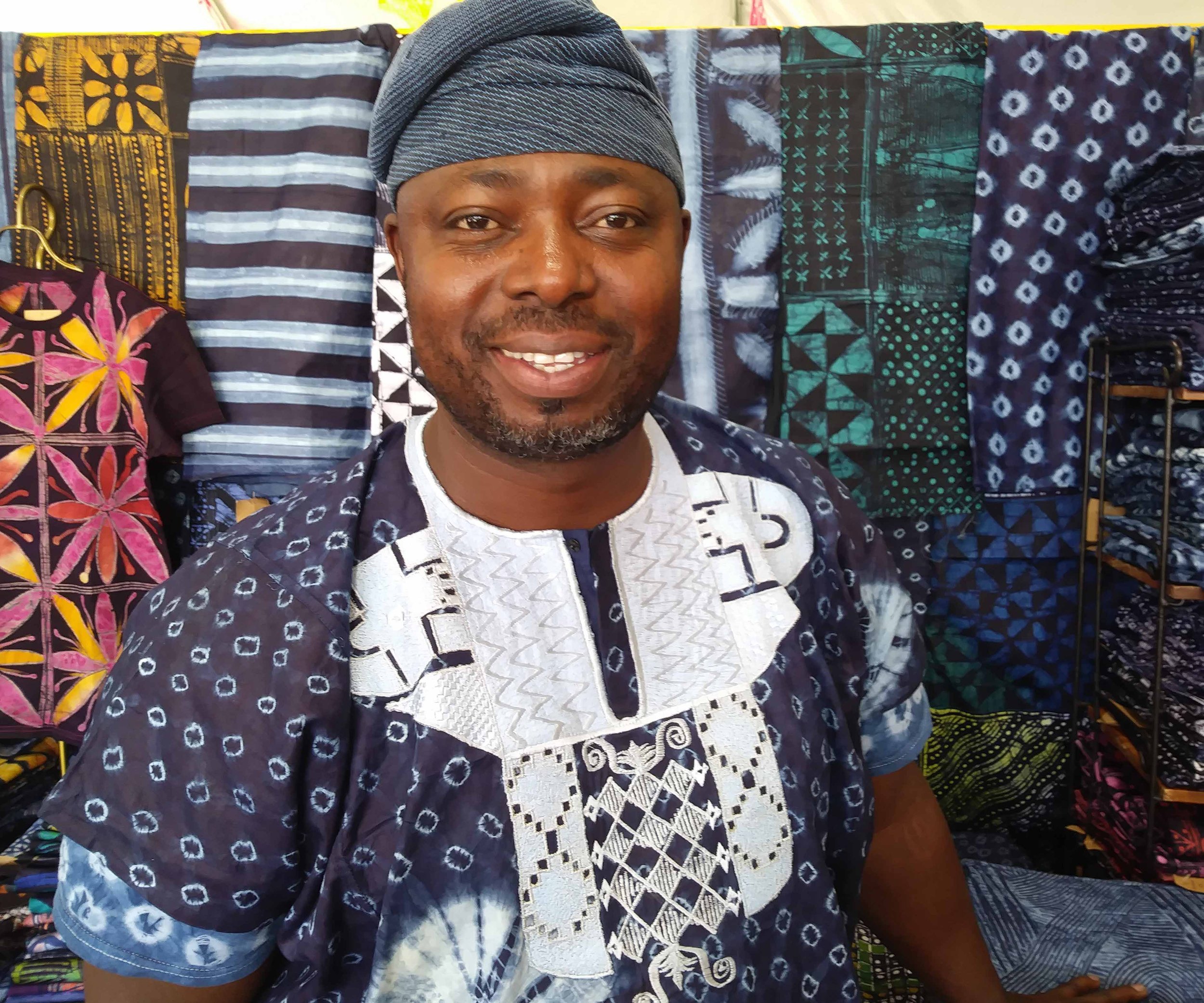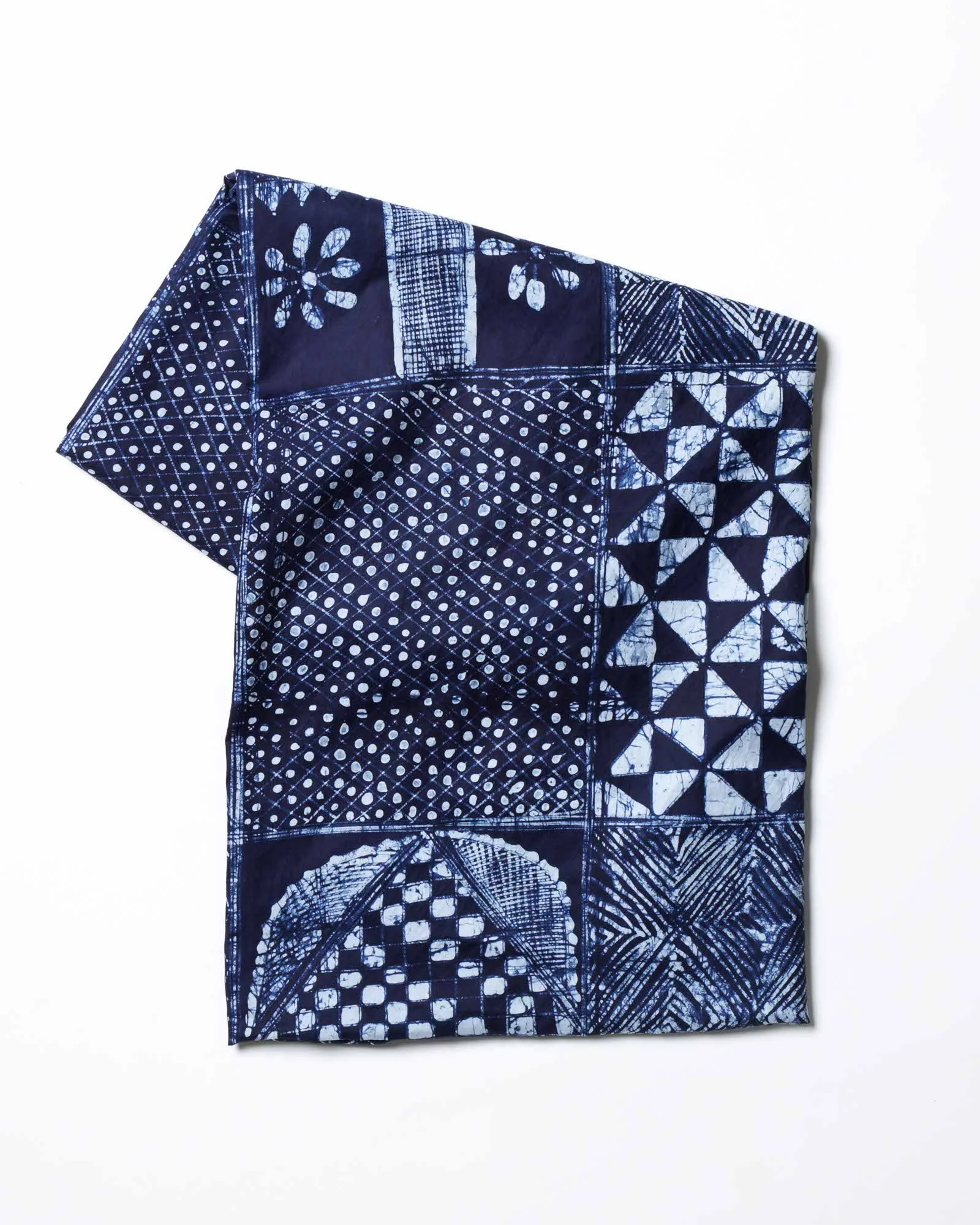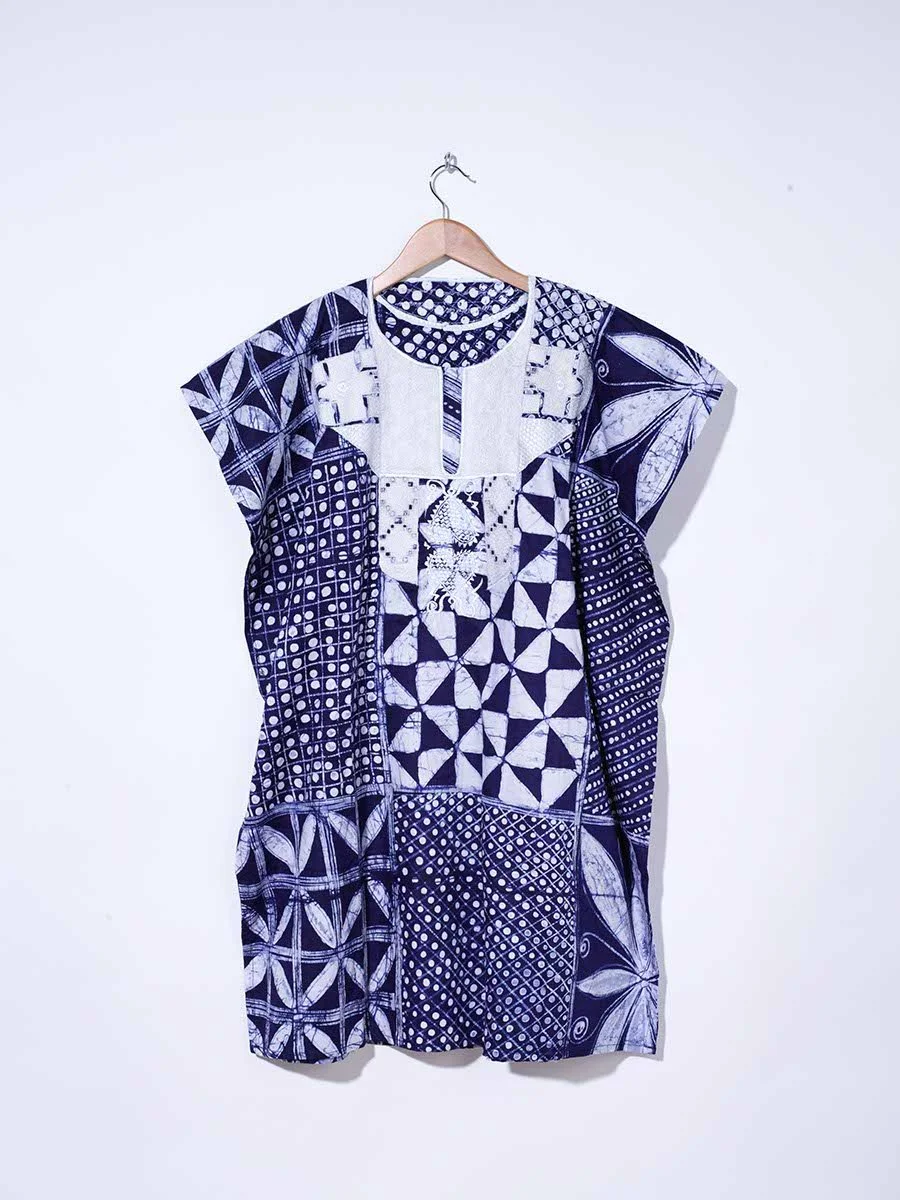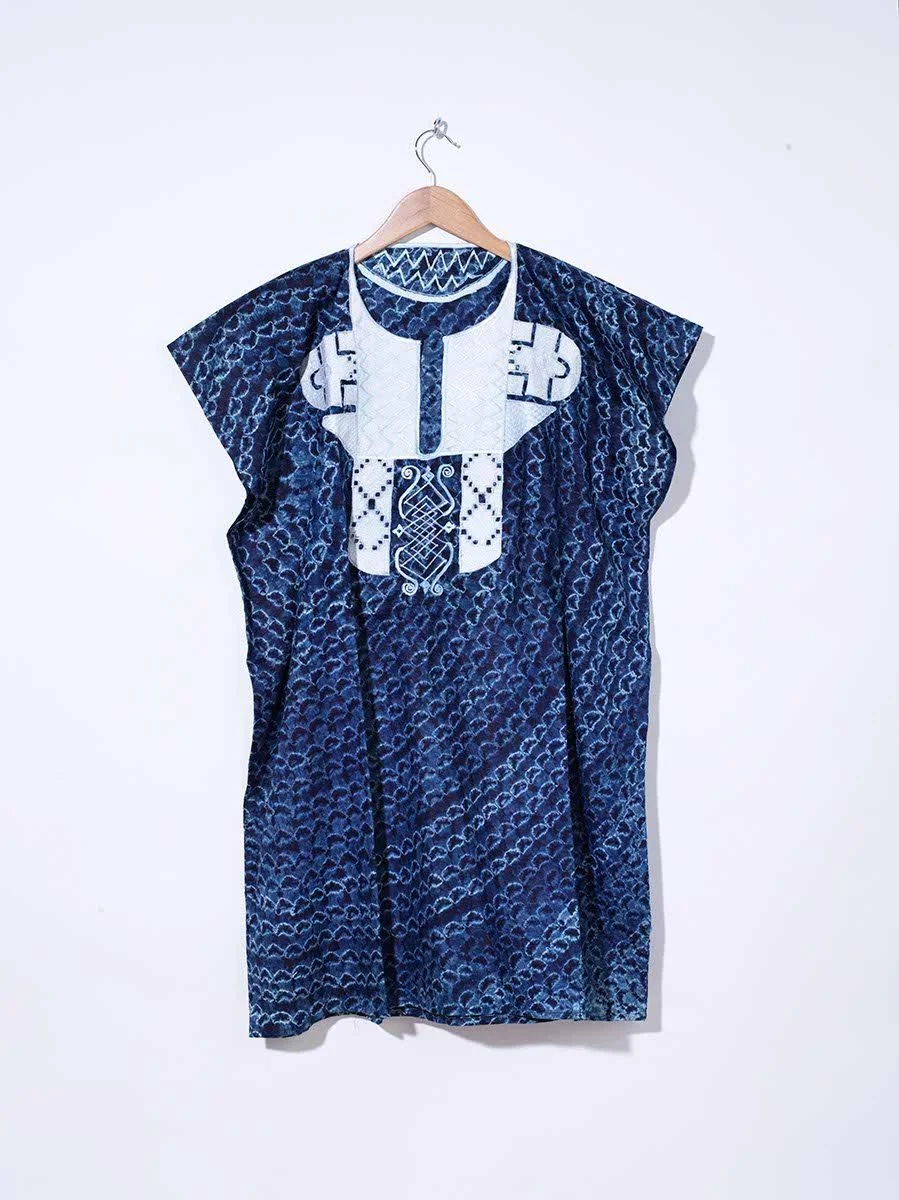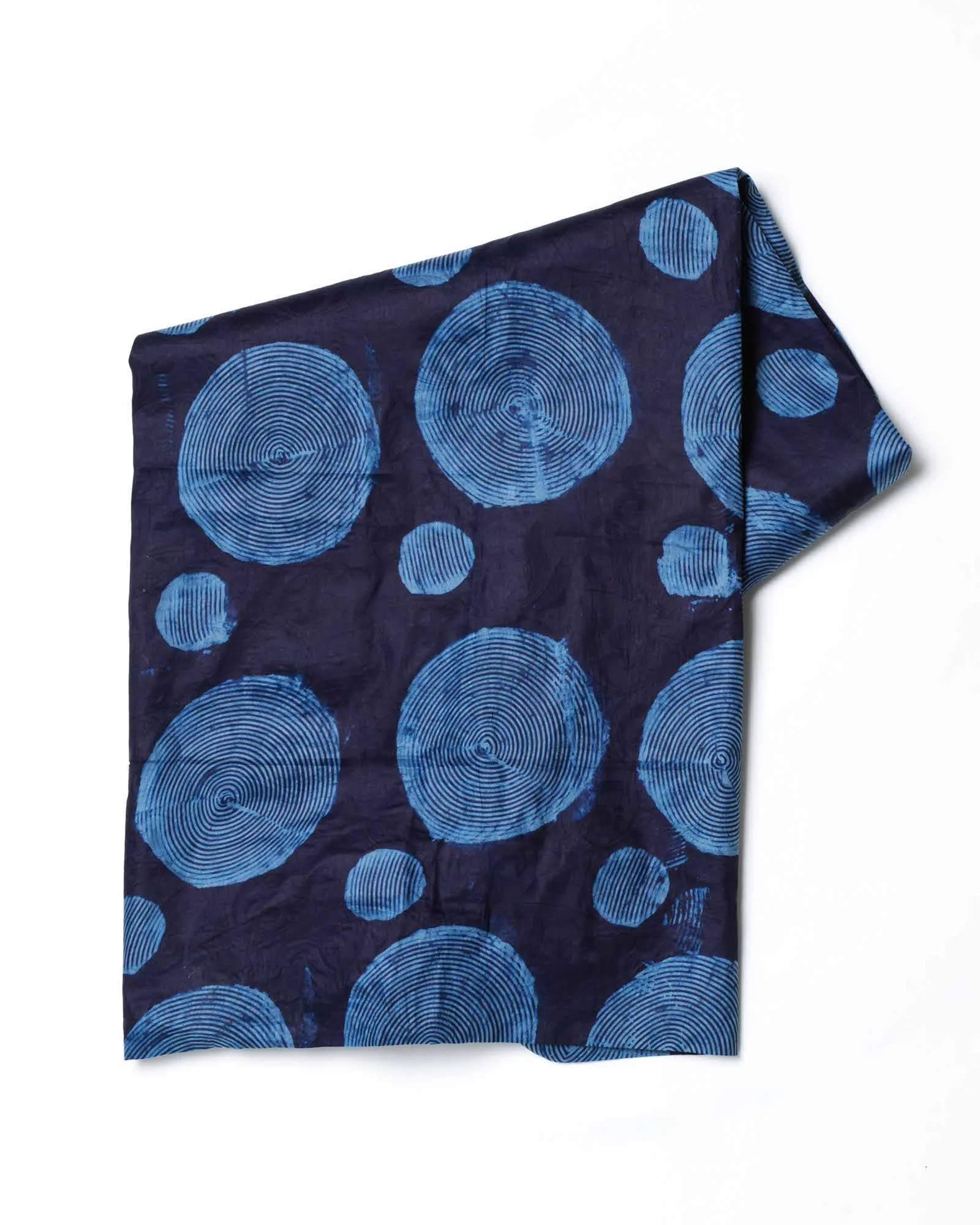Gasali Adeyemo
Adire Traditions of Nigeria
Master adire artist, Gasali Adeyemo, creates beautiful fabric by the yard and clothing using a variety of resist-dyeing techniques from his home country of Nigeria. He specializes in making indigo-dyed cotton adire cloth because of its cultural importance to his people. Each textile has traditional Yoruba designs, with symbolic and biographical meanings. Adeyemo was inspired to learn this craft by his mother, who he credits as the most important teacher he ever had, saying, “She gave me a love of fiber art which began by just watching her and learning the designs and what they represented.”
Adeyemo harvests pigment from wild indigo plants, which are indigenous to Nigeria, to dye locally-cultivated and woven cotton cloth. “I use the traditional Yoruba methods of batik, adire eleko, and tie-dye. In each method different designs are used, each having special meanings,” he explains. Batik, which is called adire alabela in the Yoruba language, is the process of creating designs using wax. The wax can be applied to the fabric with stamps, stencils, or freehand. Similarly, adire eleko designs are made by using cassava paste resists, which are applied with broom bristles and chicken feathers. Raffia or wild grass is used for tie-dye techniques including hand-tying areas to create circular patterns and stitching raffia into the fabric for linear patterns.
“Art is very important in my community,” Adeyemo says. “It is the way we preserve traditions for the young generation to come. […] T-Shirts with traditional Yoruba designs are a common style worn in Nigeria as a fashion. This is a way for the younger generation to wear the traditional techniques. Fabric made with traditional Yoruba designs is often used as a gift. I present people fabric for occasions such as weddings, burials, and naming ceremonies.”


